Luna Moth
Actias luna
The Luna moth is probably the best-known of the American silkmoths. Although it doesn't produce a large amount of silk, and isn't really practicable for textile use, I am rearing it for sake of its beautiful green wings. I grew up with these flitting through the woods near my home in the piney woods north of Houston; now that I live in Dallas, I don't see them much. Luna moth caterpillars eat a variety of trees, including walnut, pecan, and sweetgum. I am raising these on pecan, because I have a tree in my yard. Fresh pecan branches have a tendency to wilt - if you pick stems that have second-year wood on them, they fare much better.
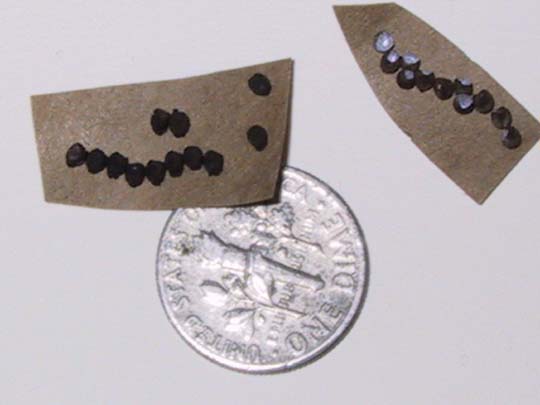
The eggs are of medium size, and very dark brown. They almost look like caterpillar frass. The ones on the upper right have hatched; you can see where the exiting caterpillars have eaten their way out. May 21, 2004.
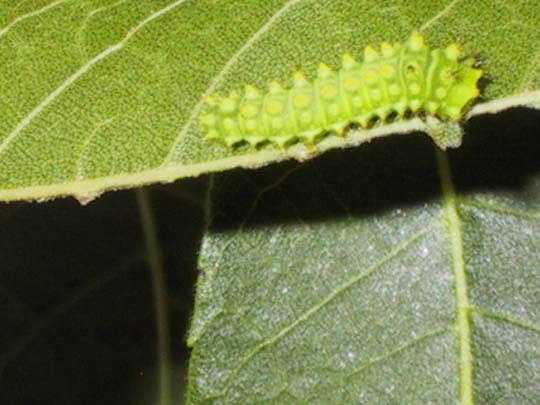
I didn't catch a picture of the first instar caterpillars. This is a second instar caterpillar. May 26, 2004.
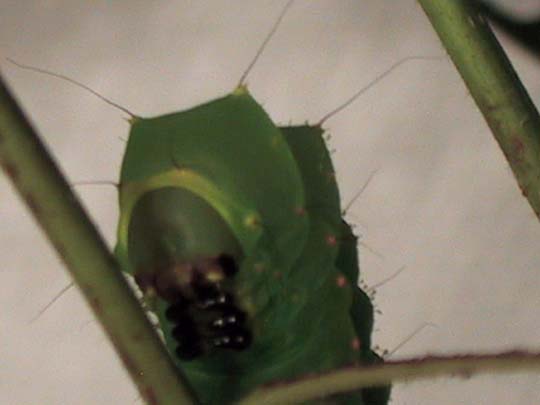
This is a third-instar caterpillar. I love the way the scoli, the hairs on the caterpillar, show up in this picture. June 6, 2004.
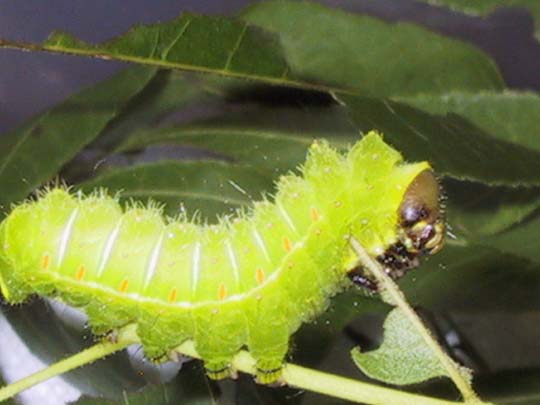
Just a couple of the caterpillars have already changed into fourth instar. The older and larger they grow, the more they resemble polyphemus caterpillars - the face has changed for a darker one, and the caterpillar has more color on its spiracles.
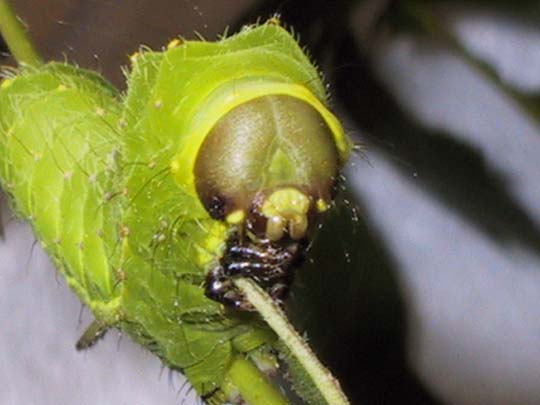
Here, you can see the worm grasping a leaf as it's about to eat. June 6, 2004.
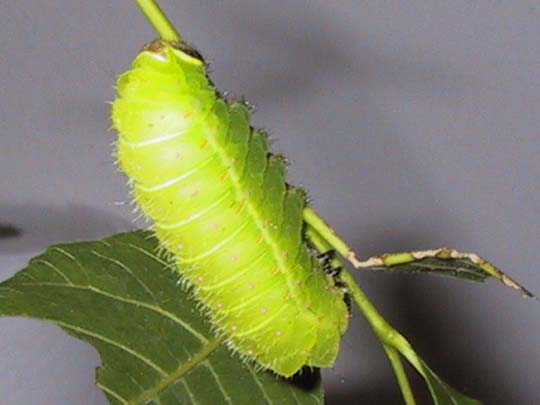
The fifth instar luna caterpillar is very chubby; although it's colored a lot like a polyphemus, the shape is distinctive. June 17, 2004.
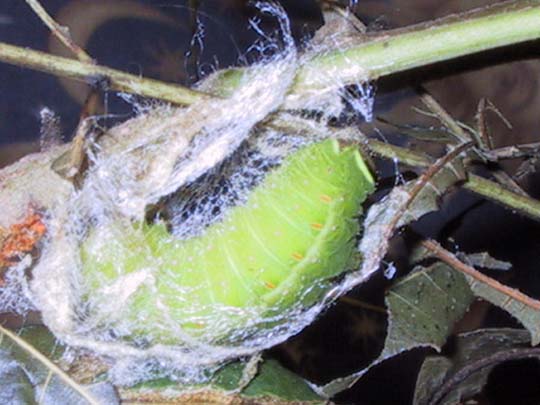
Luna caterpillars usually spin their cocoons in the leaf litter at the base of the trees they live in. This one was spinning his cocoon up against the bottom of the container, and when I picked up the stems, I got to see this cut-away view.
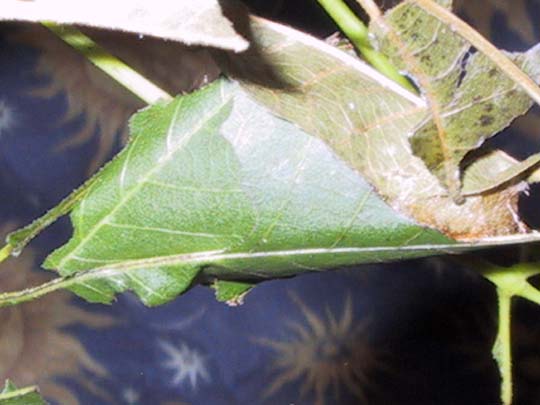
This is more like how they usually look. You can see just a little corner of the actual cocoon peeking out from the leaves on the right-hand side. The cocoons are fairly thin and papery. June 17, 2004.
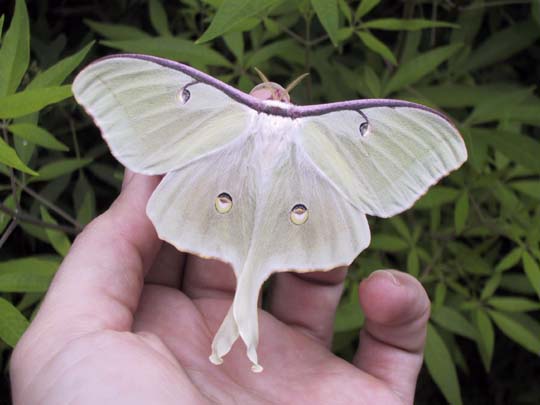
July 1, 2004. At long last, the Luna Moth! I didn't get any successful pairings, so there won't be mating shots or eggs with this species. I don't plan at present to raise them again here, because there doesn't seem to be a strong local population, and I don't want to inbreed. Also, their silk is very thin, and may not even be enough to spin a thread from.
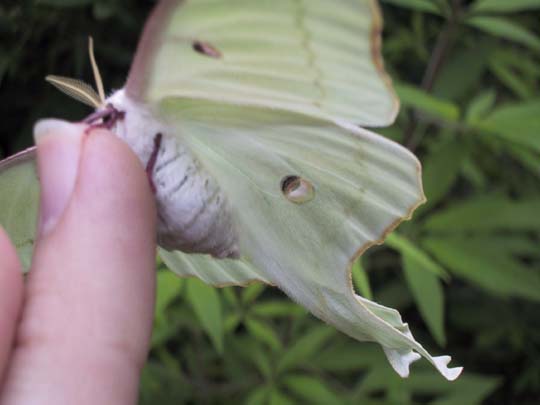
Here, you can see the belly is full of eggs.
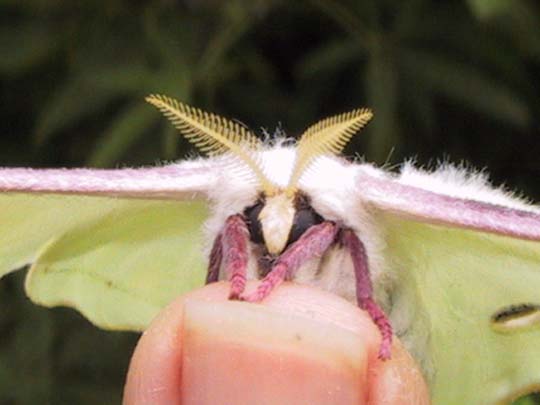
And here, you can see the purple along the wing fronts and on the legs. They're a very pretty moth. July 1, 2004.